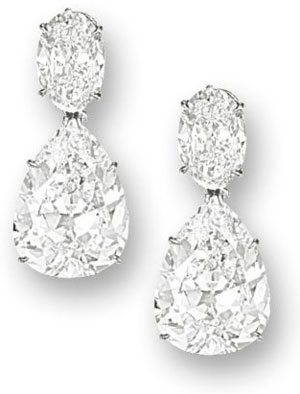Harry Winston Rough Sales Stall, Retail Strong
October 10, 11
 The current crisis is centered on sovereign debt, not consumer credit like in 2008/9, therefore consumers are buying but manufacturers are suffering from a credit crunch, according to Harry Winston's CEO Gannicott |
"The credit facilities essential to the diamond polishing industry are largely underwritten by European banks," Harry Winston said Monday.
The credit facilities have not increased inline with rough and polished diamond prices. "The processing industry is now selling polished and reducing rough purchases to increase liquidity even as jewelry retail consumption continues at levels higher than last year."
This is true for Harry Winston too. While jewelry and watch sales by Harry Winston continue to increase in the first two months of the third quarter, its rough diamond sales are suffering from the global weakness and has come to a near stand still.
"Although we continue to make small sales of specific rough diamond assortments to specialist clients, we have elected not to make broader rough diamond sales into an unstable market that seeks bargains," says Harry Winston Chairman and CEO Robert Gannicott.
The company has approximately $112 million of rough diamond inventory at June sales prices.
Gannicott warns that significant rough sales revenues will be deferred into the fourth quarter, and possibly subsequent periods. "We expect a return to normality in November as demand increases in the lead-up to the Christmas, Indian wedding and Chinese New Year seasons."
After rising by about 25 percent over the past year up to the end of July, the polished round diamonds that form the core of Harry Winston's jewelry sales, have since declined by about 10 percent. Rough diamond prices increased by around 50 percent over the past year, but are now correcting against polished prices.
Contrasting the rough end of the business, Harry Winston retail sales are rising, have been particularly strong in the U.S. and Japan with Chinese customers representing a growing share of the clientele in all sales regions.
"The credit crisis of 2008/9 was centered on consumer credit and the banks that were supporting it. This had a dramatic effect on the consumer. The current crisis is centered on sovereign debt and the largely European banks that are its holders, while consumer off-take remains resilient," according to Gannicott.